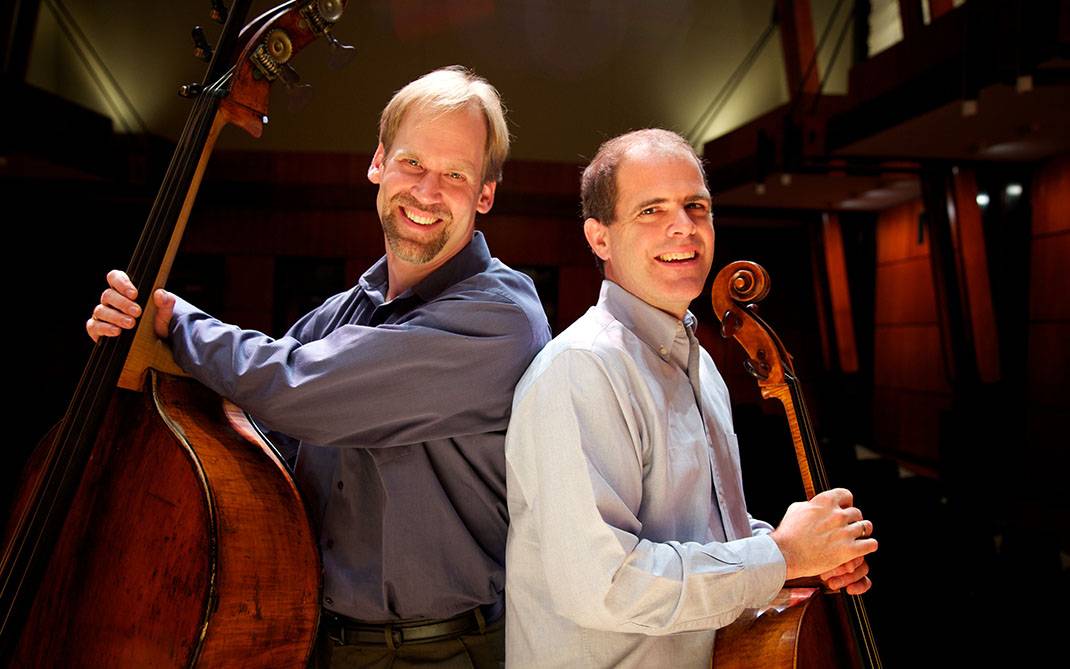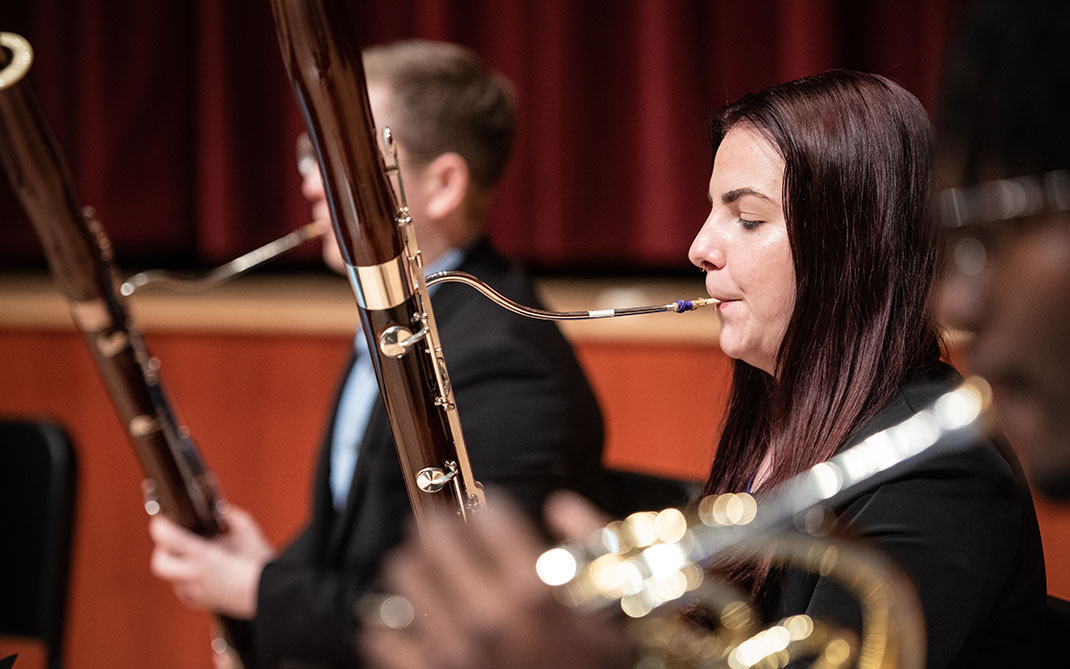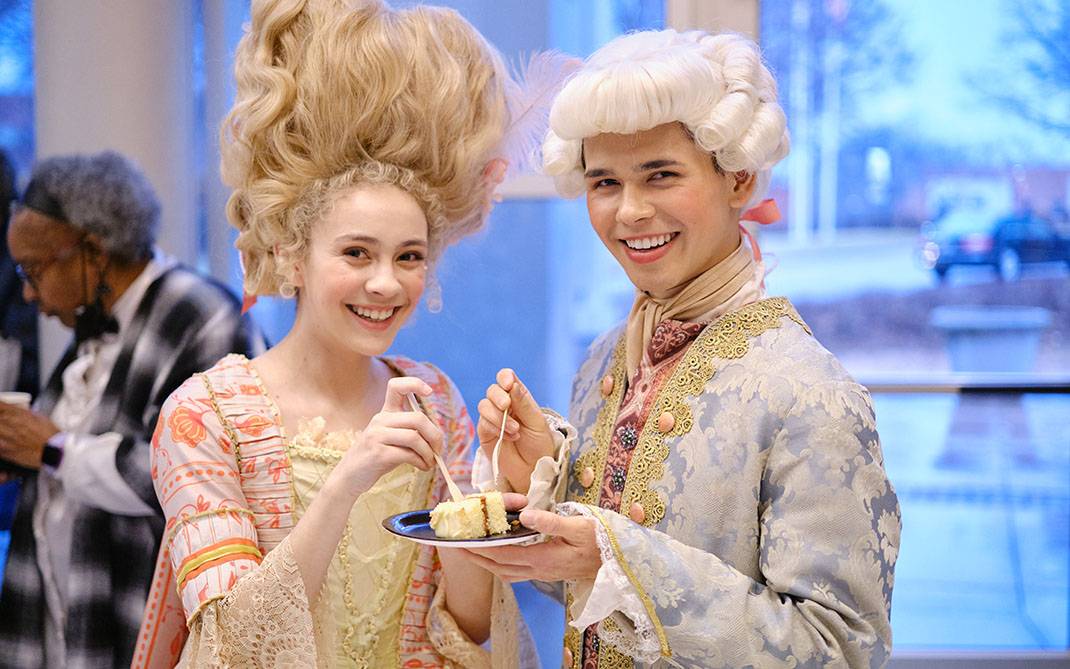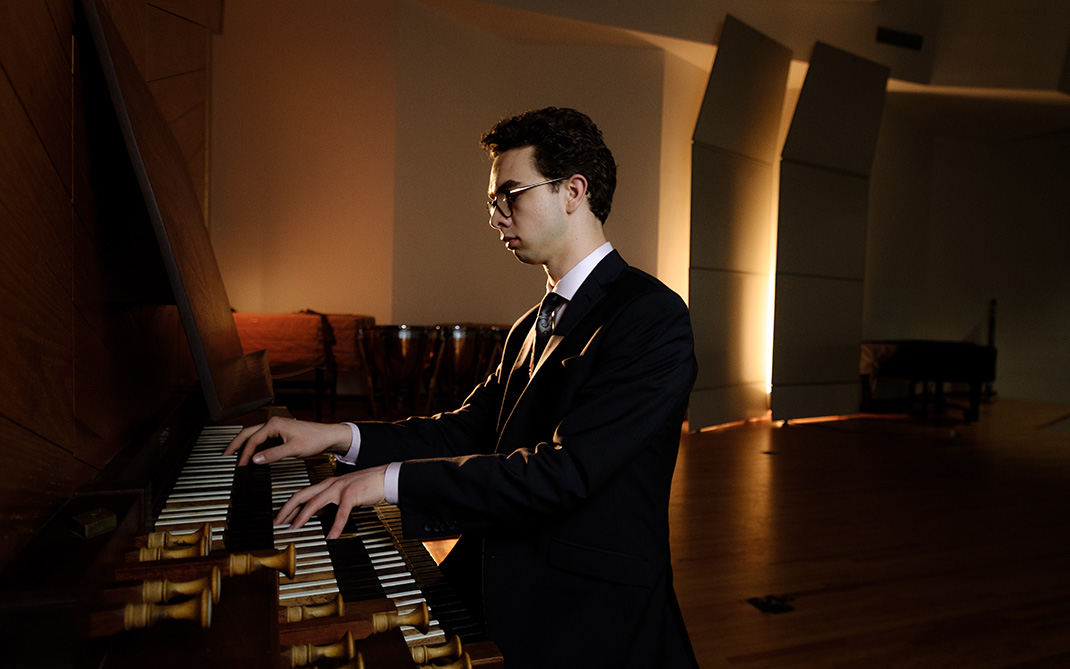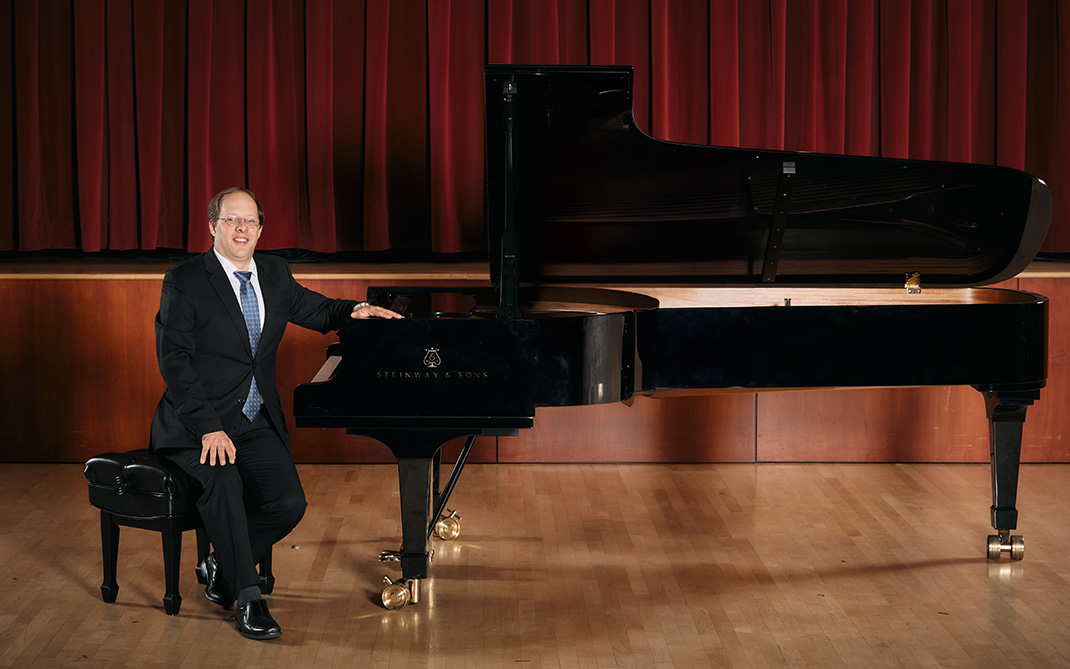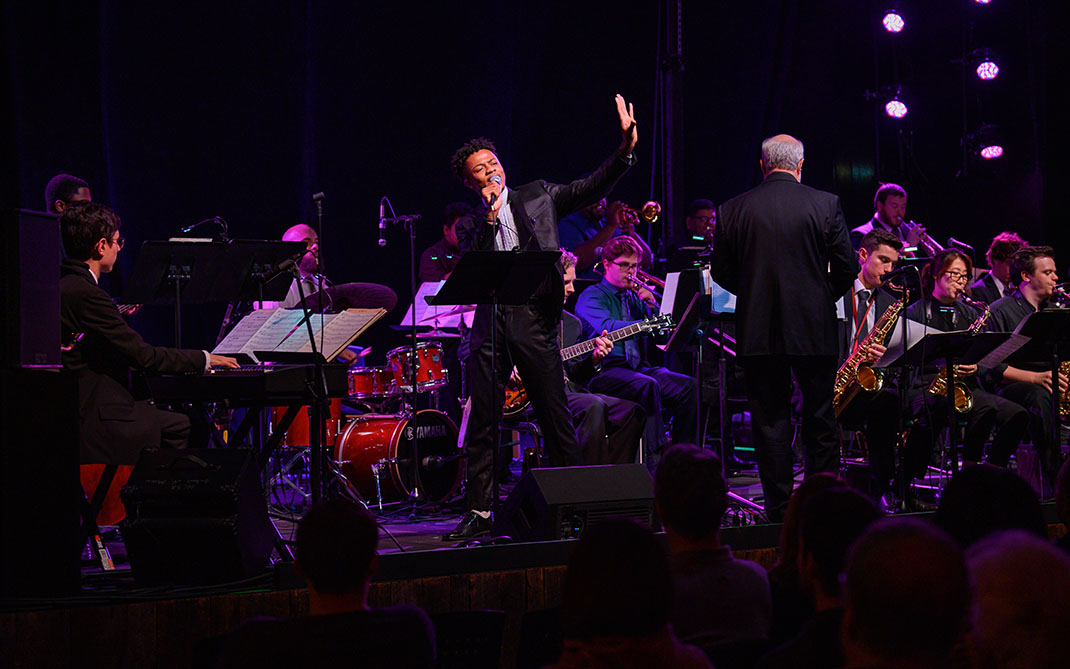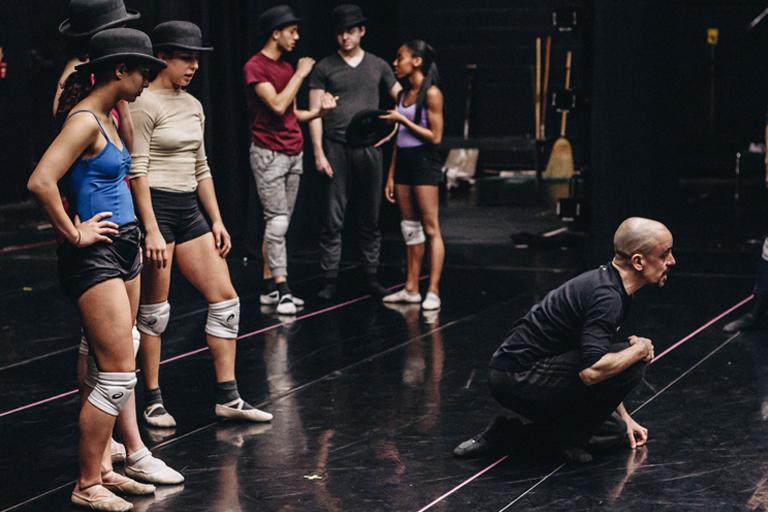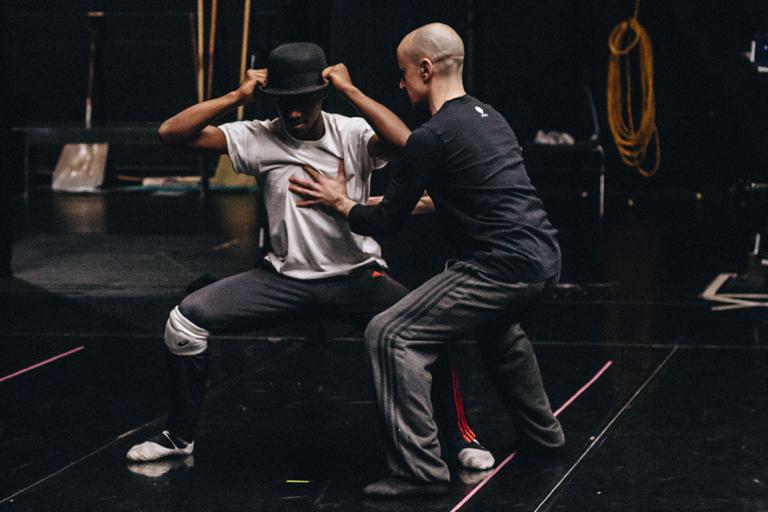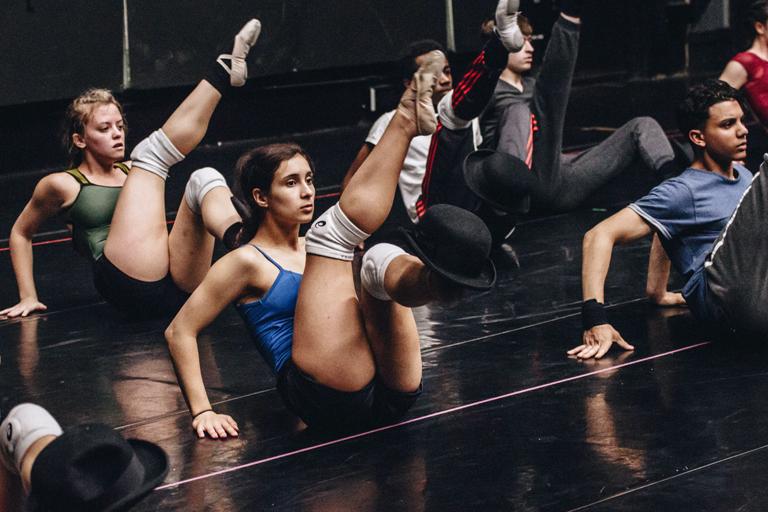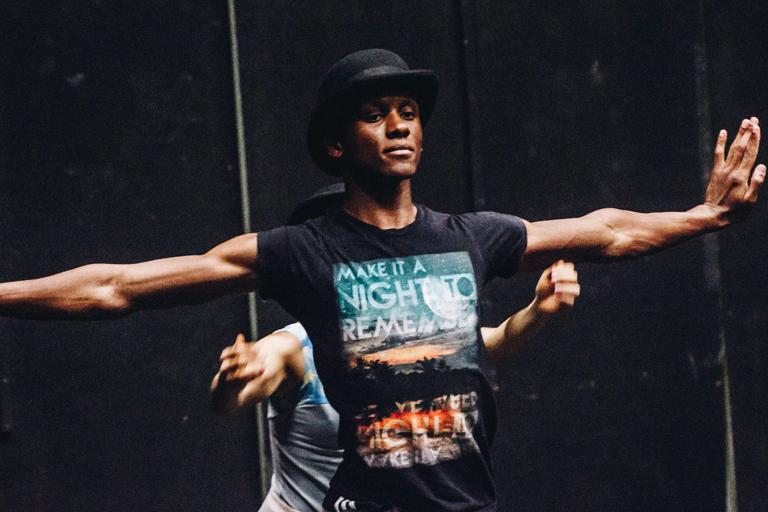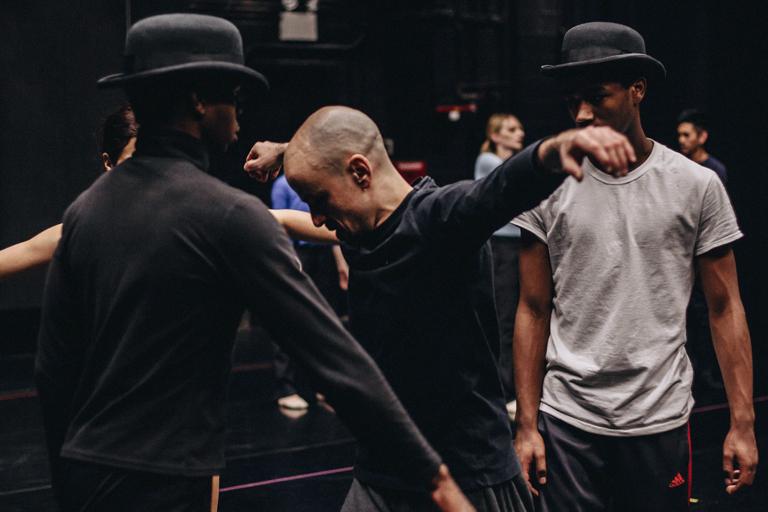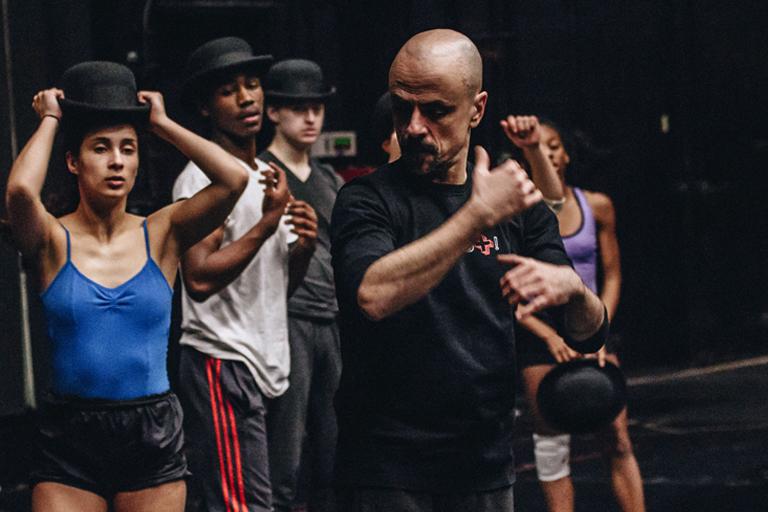Spanish choreographer Goyo Montero finds UNCSA 'an island of art'
Audiences last saw classical ballet senior Dane LeAnna on pointe as part of The Nutcracker’s snow court. Others will remember the incredible lifts of the Snow Queen by freshman ballet student Zeek Page. But we’re not in December anymore. There is a new dance in town and it shatters what you think classical ballet dancers can do.
Winter Dance Concert’s Alrededor no hay nada, by famed Spanish choreographer Goyo Montero, is a fast-paced contemporary ballet dance with tricks, flips and aerobatics that will surprise audiences—especially when they realize the dancers are classical ballet students. The dance is part of Montero’s larger choreography Benditos Malditos, or Blessed Dammed. This is the U.S. premiere of this piece.
“It really is amazing what they are doing,” says Montero. “It is quite physical. There is a lot of floor work, lots of lifting for the boys and a lot of acrobatic stuff. It must be fun for them, but it is very hard. I’m happy because they are so hungry to learn.”

Classical ballet dancers rehearse the contemporary ballet dance "Alrededor no hay nada."
Giving movement to spoken poem
Benditos Malditos, or Blessed Dammed, is a poem with movement. It is based upon the poem/song “El Día de la Creacións” of Spanish poet Joaquin Sabina. It is about relationships, obsessions and transgressions. The main part comes from Brazilian poet/musician Vinícius de Morais, that is about the social reality of Latin America. The poet highlights the idea to enjoy the day as if it were your last. Montero, who studied dance at the Royal Conservatory of Madrid and the National Ballet School of Cuba, says originally the dance was about life in Cuba, but human struggles are worldwide.
“In any country there is a differences between rich and poor, people who are enjoying life and people who are suffering,” Montero says. “At any time, there is someone dying and someone being born. I think it is just about us living and enjoying living—because it could be our last day on earth.”
I always liked this to be done by young people because they have this will. They want to prove something. This piece is about this young energy.
Goyo Montero
Montero created this piece for young dancers in the corp de ballet. These are the dancers who are a backdrop for the principal dancers. They are not the soloists, but in Alrededor no hay nada, Montero encourages the dancers to express their individuality.
“I think this piece is especially created for young people,” Montero says. “I always liked this to be done by young people because they have this will. They want to prove something. This piece is about this young energy.”
Challenging the classical ballet dancers
Audiences will quickly realize there is very little music in this dance. The dancers
move to a poem spoken in Spanish. Dancing to words is something LeAnna says she had
anticipated would be difficult, but was surprised how quickly she connected to it.
(Read LeAnna's Artistic Statement when she applied to UNCSA School of Dance.)
“Learning to dance to words has been a really cool experience,” LeAnna says. “Especially when Goyo is here, because he knows the poems by heart so sometimes in rehearsals he’ll just come up and say it in the same rhythm and he can slow it down or speed it up depending on what we need. It’s been fascinating because what we found is that the words are very similar to music. They have rhythm. You find the cadences in the voice and you find the words that you do a particular step on.”

Sophia Bonacorso, Dane LeAnna and Athena Nikolakopoulos in rehearsals of Alrededor no hay nada in De Mille Theatre.
Used to lifting dancers, Page said it took him a bit to figure out the technique for doing the physicality of the piece.
“At first I was just trying to muscle my way through it. I wasn’t used to all the upper body and arm movements,” Page says. “But once I was told to ‘let it go,’ it became a lot easier to let your body just do the move naturally. We are going out of our technique range, which will only further our technique range and our artistry range.”
LeAnna echoed the expansion of their range through Montero’s piece.
“In classical ballet you are not really trained in how to go smoothly into the floor,” she says. “We all are learning how we get up and off the floor in a very elegant way – how you make something so physical be soft at the same time.”

Zacchaeus (Zeek) Page practices lifting Saki Morimoto.
Another experience the dancers have in this piece is working with props – their coats and hats. Montero wants the male and female dancers to look the same.
“I wanted them to wear the jackets because it gives the feeling of something real – that they are not dancers but are people on the street,” Montero says. “The hat gives the feeling of something covered. In my culture when you go to church, you cover your head. I also wanted these hats because they look a little like Charlie Chaplin—like a clown—to give it a bit of humor.
Because the hats hide the hair, they dancers look similar to each other. But as the hats come off, you begin to see the personalities of the dancers, which is something Montero encourages.
“If you put in your personality it becomes interesting because (audiences) not only see the step, but you have this extra thing. Then all these personalities together make a whole. I’m very exact in what I demand. I know which lines I need to approach in this piece. Every movement is very defined like words written down. But at the same time, unless they put something personal into it, it’s shallow. I do believe in the personality of the dancer coming through a choreographed work. They are not only interpreters, they are also artists who have their own approach – so I want to see that.
UNCSA is an island of art
Montero said Dean Susan Jaffe invited him to come to the school when she attended the prestigious Prix de Lausanne, where his choreographies are part of the contemporary repertoire of the competition.
“She said she had this great school and she wanted me to come here,” he recalls. “Of course I was excited. I’m a big fan of her work so I said immediately yes!”
While highly-sought after by professional companies, Montero enjoys his work with students. The professionals, with their years of work, have more knowledge. With students, he says, you need to teach them every step, every process.
“But of course there is satisfaction when you see the progress with the students that is much more than with the professionals,” he says. “You see how much you connect to things they’ve never done before and that is very exciting as a teacher, a choreographer, a coach. The students wonder about everything and this makes the work very exciting.”
When he arrived on campus, Montero says he was surprised at what he found.
I tell the students how fortunate they are because if you go to Europe you might not find a school like this funded by the state.
Goyo Montero
“It’s like an island of art,” he says. “I was surprised by this amazing place. You have your own stage, your own studios, your Pilates Room, your teachers. You have such a great opportunity for people here. I tell the students how fortunate they are because if you go to Europe you might not find a school like this funded by the state.”
Will Montero bring another work to UNCSA?
“Of course!” he says. “I have really had a lot of fun. I would like to create something for here. You have the quiet and you have the space to really make something new. I would love to come back, yes.”
Behind-the-scenes peek at rehearsals
February 21, 2017
